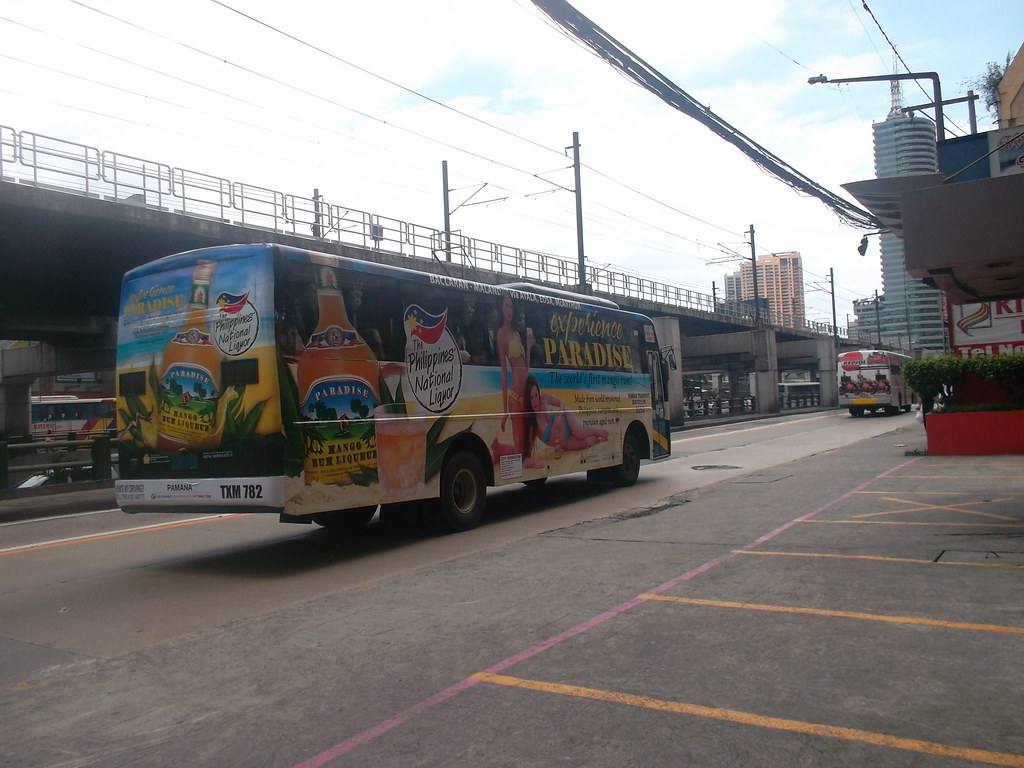Transit Advertising Philippines: An Ingenious Means to Promote
Transit Advertising Philippines: An Ingenious Means to Promote
Blog Article
Understanding the Duty of Transit Advertising And Marketing in Enhancing Brand Exposure and Consumer Engagement
Transit advertising and marketing has actually become a crucial component in the advertising landscape, supplying unique possibilities for brands to boost their exposure and engage customers properly. With the capability to reach a captive and diverse audience during their everyday commutes, these advertising and marketing approaches are not simply about visibility; they have to do with developing meaningful connections with prospective customers. As we check out the multifaceted advantages and ingenious strategies within transportation advertising, it ends up being important to take into consideration just how these components jointly affect customer perception and behavior, raising questions regarding their lasting effect on brand name commitment.
Definition of Transportation Advertising
Transportation advertising and marketing describes the technique of advertising items, services, or brand names with advertisements put in and around mass transit systems. This form of marketing encompasses a variety of placements, consisting of posters on buses and trains, digital screens at transit terminals, and covers on the outside of automobiles. It intends to get to a diverse audience, capitalizing on the high foot traffic connected with public transit.
Transportation marketing is purposefully positioned to capture the attention of commuters, that usually invest substantial time taking a trip or waiting. By integrating ads right into the everyday regimens of individuals, brands can produce a long-term impact and foster brand recognition. The tool is particularly efficient in urban atmospheres, where public transportation is a main setting of travel.
Furthermore, transit advertising and marketing can facilitate local targeting, enabling organizations to get to particular demographics based on transit paths and station areas. As city populations expand and the use of public transportation boosts, this advertising and marketing approach has gotten importance as an important element of integrated advertising techniques. The vibrant nature of transit marketing, integrated with its ability to engage customers in a captive environment, underscores its importance in contemporary advertising methods.
Advantages of Transit Marketing
The efficiency of transportation marketing hinges on its capacity to deliver a multitude of advantages to brands looking for to enhance presence and interaction. Among the primary advantages is the substantial reach it offers; transportation advertisements can successfully target varied demographics across urban areas, reaching both pedestrians and commuters alike. This broad exposure substantially improves brand name understanding.
An additional advantage is the high regularity of perceptions. As transit cars follow established paths and stop at several areas, they create recurring direct exposure that reinforces brand name messages. This frequency cultivates knowledge, which is critical in consumer decision-making.
Transit advertising is likewise economical compared to various other media platforms. Offered its expansive reach and capacity for high impacts, brand names frequently experience a lower cost per thousand perceptions (CPM), maximizing their advertising and marketing budget plan.
Additionally, transportation ads can produce a feeling of neighborhood link. By aligning with neighborhood transit systems, brand names can reverberate with local target markets and foster a feeling of regional satisfaction. This localized technique enhances brand loyalty and involvement, making transit marketing an engaging choice for organizations aiming to strengthen their presence on the market.

Reliable Techniques for Transportation Projects
To maximize the effect of transit campaigns, brands should take advantage of critical planning and execution customized to their target audience. Initially, recognizing the group qualities of the audience utilizing public transportation is critical. This allows brands to create customized messaging that resonates with prospective consumers.
Following, picking the appropriate transportation mediums is crucial. Whether utilizing bus covers, train posters, or electronic screens, each medium has distinct advantages that can boost visibility. For instance, vibrant visuals on bus covers can draw in attention, while digital advertisements can be upgraded frequently to mirror timely promotions.
Moreover, incorporating a cohesive branding strategy across transit platforms ensures uniformity and enhances the brand name's identity. Utilizing unforgettable taglines and eye-catching layouts will certainly reinforce brand name recall among commuters.
By utilizing these strategies, brands can effectively harness the possibility of transit advertising and marketing, cultivating greater understanding and link with their target audience. Eventually, a well-executed transportation project can drive considerable development in brand name exposure and consumer interaction.

Determining Impact and Involvement
In reviewing the efficiency of transit advertising campaigns, precise measurement of effect and engagement useful link is vital for brand names seeking to optimize their marketing strategies. Metrics such as reach, regularity, and impacts provide fundamental information to examine presence. Examining these elements aids identify the amount of possible customers are revealed to the ads throughout their daily commutes.
Engagement can be additional gauged with customer interactions, such as internet site web traffic, social media mentions, and straight reactions to calls-to-action included in the advertisements. Using devices like QR codes or special URLs can assist in monitoring of customer actions straight linked to transit campaigns. Studies and feedback mechanisms also act as beneficial techniques to gather qualitative data on consumer understandings and recall of the advertisement.
Additionally, progressed analytics and attribution models can correlate transportation direct exposure with subsequent purchasing actions, providing insights into the return on financial investment. By employing a detailed method that integrates quantitative and qualitative measures, brands can create a nuanced understanding of their transportation marketing impact. Inevitably, this data-driven technique enables brands to fine-tune their campaigns, guaranteeing discover here they reverberate effectively with target market and improve general brand visibility.
Instance Research Studies of Effective Projects
Effective transit advertising and marketing campaigns function as compelling instances of just how efficient methods can raise brand name presence and interaction. Transit Advertising Philippines. One significant case is the "I Love New york city" campaign, which transformed the city's image and attracted millions of vacationers. By utilizing subway advertisements, billboards, and bus wraps, the campaign created a solid, cohesive brand identification, resulting in a substantial uptick in tourist and regional business patronage
An additional excellent project is Coca-Cola's "Share a Coke" effort, which leveraged transit advertising to individualize the brand experience. By featuring popular names on promotional materials throughout numerous transit systems, Coca-Cola cultivated a deeper psychological link with customers, urging them to share their experiences on social networks.
In addition, the "Got Milk?" campaign effectively made use of public transport advertisements to reach a wide target market, reinforcing the message of the relevance of milk in a balanced diet plan. The campaign saw a quantifiable increase in milk consumption in target demographics.
These case researches highlight that when implemented attentively, transit marketing can dramatically boost brand presence, foster consumer interaction, and drive measurable outcomes, demonstrating its crucial function in modern-day advertising approaches. - Transit Advertising Philippines
Conclusion
Finally, transportation advertising functions as a crucial tool for improving brand visibility and cultivating customer interaction. By making use of tactically put ads within public transportation systems, brands can successfully strengthen and reach varied audiences recognition via consistent exposure. The application of targeted messaging and cutting-edge approaches better amplifies the influence of transportation projects. Ultimately, the ability to gauge engagement and assess successful instance research studies emphasizes the effectiveness of transportation advertising in driving brand commitment and consumer interactions.
Transportation advertising has emerged as a critical component in the advertising and marketing landscape, supplying special opportunities for brand names to raise their visibility and involve customers efficiently.Additionally, transportation marketing can assist in local targeting, enabling businesses to get to certain demographics based on transit paths and terminal places.In reviewing the efficiency of transportation advertising and marketing projects, exact dimension of effect and click involvement is essential for brands looking for to maximize their advertising strategies.Successful transportation marketing projects serve as compelling examples of how efficient approaches can boost brand exposure and involvement.In final thought, transit advertising and marketing serves as an essential device for improving brand presence and promoting customer involvement.
Report this page